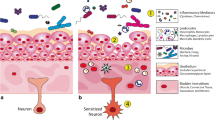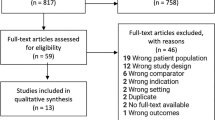Abstract
Introduction and hypothesis
Recent studies applying molecular techniques have demonstrated the presence of a urinary microbiota not detected by standard microbiological techniques. These have been found in the urine of healthy individuals and in those suffering from clinical symptoms. The present article reviews the findings of these studies to date, describing the molecular techniques, and specifically outlining any differences in microbiomes in relation to urogynecological disease. Further, the role of commensal bacteria in the lower urinary tract is considered.
Methods
An extensive literature search was conducted to identify articles on the microbiome of the female urinary tract in health and disease. We searched the electronic meta-databases Ovid MEDLINE® 1946–2015 and Embase 1974–2015. The keywords “microbiome, microbiota, bacterial colonization, microbiology, commensal bacteria, and bacteriuria” were searched in combination with “lower urinary tract symptoms, urogenital symptoms, urinary tract infection, overactive bladder and urinary incontinence.” A total of 426 papers were retrieved; 33 were included in this paper.
Results
The microbiome of the female lower urinary tract shows variance between individuals and between age groups. There are significant differences between the microbiota in the lower urinary tract of individuals with urological symptoms and those without, relating to type and proportion of commensal Lactobacillus spp. There is only weak evidence to suggest that Lactobacillus might be applied as a therapeutic measure.
Conclusions
It is still unclear what role microbiota plays in female urinary tract health. The discovery of bacteria in the urine of healthy individuals may have implications for future therapies for lower urinary tract symptoms.
Similar content being viewed by others
References
Turnbaugh PJ, Ley RE, Hamady M, Fraser-Liggett CM, Knight R, Gordon JI (2007) The human microbiome project. Nature 449:804–810
Wolfe AJ, Brubaker L (2015) “Sterile urine” and the presence of bacteria. Eur Urol 12:00206–00207
Peterson J, Garges S, Giovanni M, McInnes P, Wang L, Schloss JA, Bonazzi V, McEwen JE, Wetterstrand KA, Deal C, Baker CC, Di Francesco V, Howcroft TK, Karp RW, Lunsford RD, Wellington CR, Belachew T, Wright M, Giblin C, David H, Mills M, Salomon R, Mullins C, Akolkar B, Begg L, Davis C, Grandison L, Humble M, Khalsa J, Little AR, Peavy H, Pontzer C, Portnoy M, Sayre MH, Starke-Reed P, Zakhari S, Read J, Watson B, Guyer M (2009) The NIH human microbiome project. Genome Res 19:2317–2323
Pearce MM, Zilliox MJ, Rosenfeld AB, Thomas-White KJ, Richter HE, Nager CW, Visco AG, Nygaard IE, Barber MD, Schaffer J, Moalli P, Sung VW, Smith AL, Rogers R, Nolen TL, Wallace D, Meikle SF, Gai X, Wolfe AJ, Brubaker L (2015) The female urinary microbiome in urgency urinary incontinence. Am J Obstet Gynecol 213:347.e1–347.e11
Khasriya R, Sathiananthamoorthy S, Ismail S, Kelsey M, Wilson M, Rohn JL, Malone-Lee J (2013) Spectrum of bacterial colonization associated with urothelial cells from patients with chronic lower urinary tract symptoms. J Clin Microbiol 51:2054–2062
Fouts DE, Pieper R, Szpakowski S, Pohl H, Knoblach S, Suh MJ, Huang ST, Ljungberg I, Sprague BM, Lucas SK, Torralba M, Nelson KE, Groah SL (2012) Integrated next-generation sequencing of 16S rDNA and metaproteomics differentiate the healthy urine microbiome from asymptomatic bacteriuria in neuropathic bladder associated with spinal cord injury. J Transl Med 10:174. doi:10.1186/1479-5876-1110-1174
Lewis DA, Brown R, Williams J, White P, Jacobson SK, Marchesi JR, Drake MJ (2013) The human urinary microbiome; bacterial DNA in voided urine of asymptomatic adults. Front Cell Infect Microbiol 3:41. doi:10.3389/fcimb.2013.00041.eCollection02013
Pearce MM, Hilt EE, Rosenfeld AB, Zilliox MJ, Thomas-White K, Fok C, Kliethermes S, Schreckenberger PC, Brubaker L, Gai X, Wolfe AJ (2014) The female urinary microbiome: a comparison of women with and without urgency urinary incontinence. MBio 5:e01283–14
Wolfe AJ, Toh E, Shibata N, Rong R, Kenton K, Fitzgerald M, Mueller ER, Schreckenberger P, Dong Q, Nelson DE, Brubaker L (2012) Evidence of uncultivated bacteria in the adult female bladder. J Clin Microbiol 50:1376–1383
Reid G, Charbonneau-Smith R, Lam D, Kang YS, Lacerte M, Hayes KC (1992) Bacterial biofilm formation in the urinary bladder of spinal cord injured patients. Paraplegia 30:711–717
Petricevic L, Domig KJ, Nierscher FJ, Krondorfer I, Janitschek C, Kneifel W, Kiss H (2012) Characterisation of the oral, vaginal and rectal Lactobacillus flora in healthy pregnant and postmenopausal women. Eur J Obstet Gynecol Reprod Biol 160:93–99. doi:10.1016/j.ejogrb.2011.1010.1002
Siddiqui H, Nederbragt AJ, Lagesen K, Jeansson SL, Jakobsen KS (2011) Assessing diversity of the female urine microbiota by high throughput sequencing of 16S rDNA amplicons. BMC Microbiol 11:244. doi:10.1186/1471-2180-1111-1244
Brubaker L, Wolfe AJ (2015) The new world of the urinary microbiota in women. Am J Obstet Gynecol 213:644–649
Whiteside SA, Razvi H, Dave S, Reid G, Burton JP (2015) The microbiome of the urinary tract--a role beyond infection. Nat Rev Urol 12:81–90. doi:10.1038/nrurol.2014.1361
Nienhouse V, Gao X, Dong Q, Nelson DE, Toh E, McKinley K, Schreckenberger P, Shibata N, Fok CS, Mueller ER, Brubaker L, Wolfe AJ, Radek KA (2014) Interplay between bladder microbiota and urinary antimicrobial peptides: mechanisms for human urinary tract infection risk and symptom severity. PLoS One 9:e114185
Hilt EE, McKinley K, Pearce MM, Rosenfeld AB, Zilliox MJ, Mueller ER, Brubaker L, Gai X, Wolfe AJ, Schreckenberger PC (2014) Urine is not sterile: use of enhanced urine culture techniques to detect resident bacterial flora in the adult female bladder. J Clin Microbiol 52:871–876
Thomas-White KJ, Hilt EE, Fok C, Pearce MM, Mueller ER, Kliethermes S, Jacobs K, Zilliox MJ, Brincat C, Price TK, Kuffel G, Schreckenberger P, Gai X, Brubaker L, Wolfe AJ (2015) Incontinence medication response relates to the female urinary microbiota. Int Urogynecol J 30:30
Jalanka-Tuovinen J, Salonen A, Nikkilä J, Immonen O, Kekkonen R, Lahti L, Palva A, de Vos WM (2011) Intestinal microbiota in healthy adults: temporal analysis reveals individual and common core and relation to intestinal symptoms. PLoS One 6:e23035
Yatsunenko T, Rey FE, Manary MJ, Trehan I, Dominguez-Bello MG, Contreras M, Magris M, Hidalgo G, Baldassano RN, Anokhin AP, Heath AC, Warner B, Reeder J, Kuczynski J, Caporaso JG, Lozupone CA, Lauber C, Clemente JC, Knights D, Knight R, Gordon JI (2012) Human gut microbiome viewed across age and geography. Nature 486:222–227
Dong Q, Nelson DE, Toh E, Diao L, Gao X, Fortenberry JD, Van der Pol B (2011) The microbial communities in male first catch urine are highly similar to those in paired urethral swab specimens. PLoS One 6:e19709
Chervonsky AV (2012) Intestinal commensals: influence on immune system and tolerance to pathogens. Curr Opin Immunol 24:255–260
Guarner F, Malagelada JR (2003) Gut flora in health and disease. Lancet 361:512–519
Marrazzo JM (2011) Interpreting the epidemiology and natural history of bacterial vaginosis: are we still confused? Anaerobe 17:186–190
Cryan JF, O’Mahony SM (2011) The microbiome-gut-brain axis: from bowel to behavior. Neurogastroenterol Motil 23:187–192
Cryan JF, Dinan TG (2012) Mind-altering microorganisms: the impact of the gut microbiota on brain and behaviour. Nat Rev Neurosci 13:701–712
Gajer P, Brotman RM, Bai G, Sakamoto J, Schutte UM, Zhong X, Koenig SS, Fu L, Ma ZS, Zhou X, Abdo Z, Forney LJ, Ravel J (2012) Temporal dynamics of the human vaginal microbiota. Sci Transl Med 4:132ra152
Strus M, Chmielarczyk A, Kochan P, Adamski P, Chelmicki Z, Chelmicki A, Palucha A, Heczko PB (2012) Studies on the effects of probiotic Lactobacillus mixture given orally on vaginal and rectal colonization and on parameters of vaginal health in women with intermediate vaginal flora. Eur J Obstet Gynecol Reprod Biol 163:210–215
Siddiqui H, Lagesen K, Nederbragt AJ, Jeansson SL, Jakobsen KS (2012) Alterations of microbiota in urine from women with interstitial cystitis. BMC Microbiol 12:205. doi:10.1186/1471-2180-1112-1205
Reid G, Bruce AW (2006) Probiotics to prevent urinary tract infections: the rationale and evidence. World J Urol 24:28–32
Reid G, Burton J, Devillard E (2004) The rationale for probiotics in female urogenital healthcare. MedGenMed 6:49
Stapleton AE, Au-Yeung M, Hooton TM, Fredricks DN, Roberts PL, Czaja CA, Yarova-Yarovaya Y, Fiedler T, Cox M, Stamm WE (2011) Randomized, placebo-controlled phase 2 trial of a Lactobacillus crispatus probiotic given intravaginally for prevention of recurrent urinary tract infection. Clin Infect Dis 52:1212–1217
Beerepoot MA, ter Riet G, Nys S, van der Wal WM, de Borgie CA, de Reijke TM, Prins JM, Koeijers J, Verbon A, Stobberingh E, Geerlings SE (2012) Lactobacilli vs antibiotics to prevent urinary tract infections: a randomized, double-blind, noninferiority trial in postmenopausal women. Arch Intern Med 172:704–712
Baerheim A, Larsen E, Digranes A (1994) Vaginal application of lactobacilli in the prophylaxis of recurrent lower urinary tract infection in women. Scand J Prim Health Care 12:239–243
Author information
Authors and Affiliations
Corresponding author
Ethics declarations
Conflicts of interest
W. Umek has received research grants and a speaker honorarium from Pfizer, Astellas, and Innovacell. J. Schneeweiss and M. Koch declare that they have no conflicts of interest.
Glossary
- Microbiota
-
The ecological community of commensal, symbiotic and pathogenic microorganisms that literally share a niche
- Microbiome
-
The collective genomes of the microorganisms that reside in an environmental niche
- Genus
-
The usual major subdivision of a family or subfamily in the classification of organisms, usually consisting of more than one species
- Commensal
-
living in a relationship in which one organism derives food or other benefits from another organism without hurting or helping it
Rights and permissions
About this article
Cite this article
Schneeweiss, J., Koch, M. & Umek, W. The human urinary microbiome and how it relates to urogynecology. Int Urogynecol J 27, 1307–1312 (2016). https://doi.org/10.1007/s00192-016-2944-5
Received:
Accepted:
Published:
Issue Date:
DOI: https://doi.org/10.1007/s00192-016-2944-5




